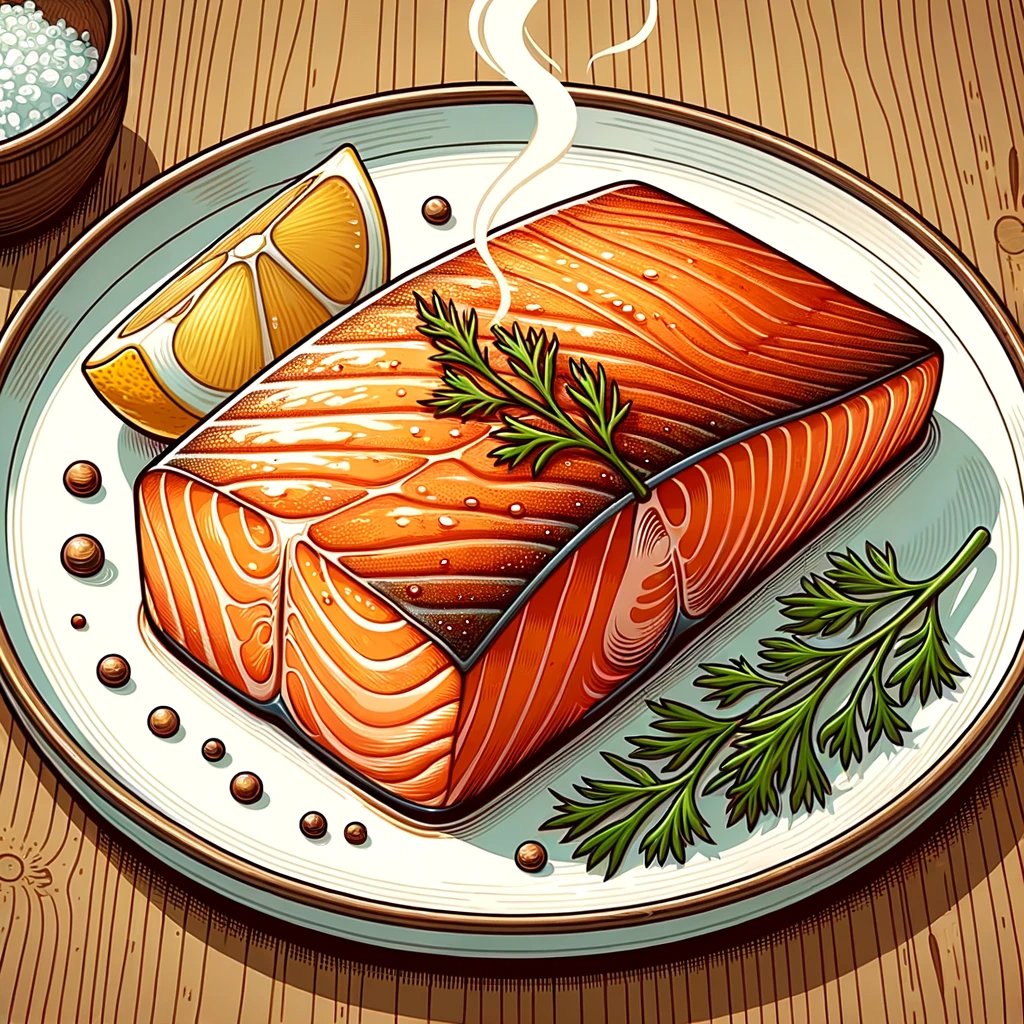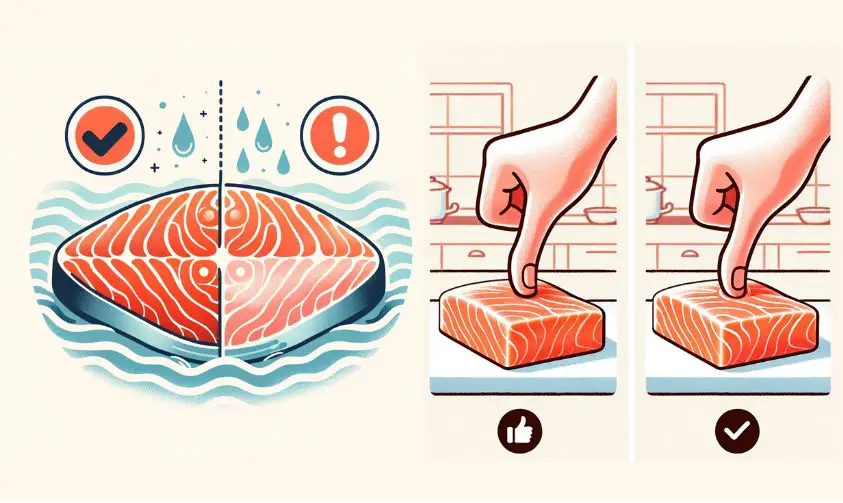Ah, salmon—the king of fish, revered for its rich flavor and velvety texture. But let’s face it, cooking salmon can be a bit of a culinary tightrope. One minute it’s undercooked, and the next, it’s dry as a bone.
Recognizing the signs of undercooked salmon can be a game-changer in your cooking journey.
While some enjoy their salmon on the rarer side, knowing how to identify when it’s undercooked according to conventional standards can help you perfect your recipe and please a crowd.
In this blog post, we’ll dive into the nitty-gritty of what properly cooked salmon should look like.
We’ll discuss visual cues, texture, and even how to fix it if you realize it’s not fully cooked. So, let’s get started!
What Properly Cooked Salmon Should Look Like?

When salmon is cooked to perfection, it flaunts a rich pink or orange color, depending on the variety. The flesh should appear opaque rather than translucent.
If you gently press down on the salmon with a fork, the layers should easily flake apart, showcasing its moist and tender texture.
For those who like to take the guesswork out of cooking, a meat thermometer can be your best friend. The recommended internal temperature for cooked salmon is generally around 145°F (63°C).
Insert the thermometer into the thickest part of the fish to get an accurate reading.
There you have it—visual cues and temperature guidelines that can help you determine if your salmon is cooked to perfection.
Signs of Undercooked Salmon

One of the most noticeable signs of undercooked salmon is its color. Unlike fully cooked salmon, which exhibits a consistent pink or orange hue, undercooked salmon may still have areas that appear translucent or even raw.
These are spots you’ll definitely want to keep an eye on.
When it comes to texture, undercooked salmon feels noticeably different than its well-cooked counterpart.
If the salmon feels squishy to the touch or if it doesn’t flake easily when you try the fork test, these are good indications that it might need more time on the stove or in the oven.
An often-overlooked sign of undercooked salmon is its smell. While raw or undercooked salmon doesn’t necessarily have a “bad” odor, the smell should become more neutral and less “fishy” as it cooks.
So, if you’re still getting a strong, ocean-like aroma, it might not be fully cooked yet.
Visual aids can be incredibly helpful, so we’ve included some high-quality images to help you discern the differences between undercooked and properly cooked salmon.
How Do I Know If My Salmon Is Undercooked?
Below are the tests to know if your salmon is undercooked.
The Fork Test
A quick and easy method to check the doneness of salmon is the fork test. Insert a fork into the thickest part of the salmon fillet and gently twist. If the layers easily separate and flake apart, your salmon is likely done.
If not, it probably needs more cooking time.
Using a Thermometer
For a more precise approach, a meat thermometer can come in handy. As mentioned earlier, the recommended internal temperature for salmon is around 145°F (63°C).
Insert the thermometer probe into the thickest part of the fish. If it reads below the recommended temperature, you’ll know the salmon is undercooked and needs more time.
These methods provide a reliable way to ensure your salmon is cooked to your liking.
Can I Fix Undercooked Salmon?
If you discover your salmon is undercooked, one easy solution is to simply put it back in the oven.
Preheat the oven to a moderate temperature—about 350°F (175°C)—and cook for an additional 5-10 minutes.
This will usually finish the job without drying out the fish.
Alternatively, if you’ve been pan-frying your salmon, you can continue to cook it on the stovetop.
Add a small amount of oil or butter to the pan, and cook the salmon on medium heat for an additional 2-5 minutes per side, checking for doneness as you go.
Why Does My Salmon Look Undercooked Even After Cooking?
If you’ve marinated your salmon in acidic ingredients like lemon juice or vinegar, you may notice that the flesh looks paler or even slightly “cooked” before you’ve even started the actual cooking.
This can make it harder to judge doneness based on appearance alone.
The quality and type of salmon can also impact its appearance when cooked.
Wild-caught salmon, for example, can have a deeper color than farm-raised salmon.
This natural variance can sometimes make it tricky to assess whether your salmon is undercooked just by looking at it.
Can I Eat Salmon That Looks Undercooked?
The question of eating salmon that looks undercooked often comes down to personal preference.
Some people enjoy their salmon cooked medium or even medium-rare, which means the fish might look undercooked according to more traditional standards.
If you’re cooking for yourself and prefer your salmon a bit on the rarer side, that’s entirely up to you!
Related: Can You Eat Canned Salmon Raw? (Here is what you need to know)
How Long Should I Cook My Salmon?
If you’re cooking your salmon in the oven, a general guideline is to bake it at 400°F (204°C) for about 12-15 minutes. However, the exact time can vary based on the thickness of the fillet and your specific oven.
When it comes to pan-frying, the process is usually quicker. Cook the salmon fillet on medium heat for approximately 4-5 minutes per side. Keep in mind that thicker pieces may require additional time.
Conclusion
In this blog post, we’ve covered everything from visual cues of well-cooked salmon to signs of undercooking, and even how to salvage a piece that might need a bit more time in the oven or pan.
Cooking salmon doesn’t have to be a daunting task. With the right knowledge and a little practice, you can confidently prepare salmon that not only tastes great but is cooked to your liking.


